Featured Images
 New!
New!
Fences on the Moon?
Mysterious farside impact melt deposits, image width 12 kilometers at center, looking west-to-east, north is to the left, M1451669615LR [NASA/GSFC/Arizona State University].
Published on 25 Apr 2025
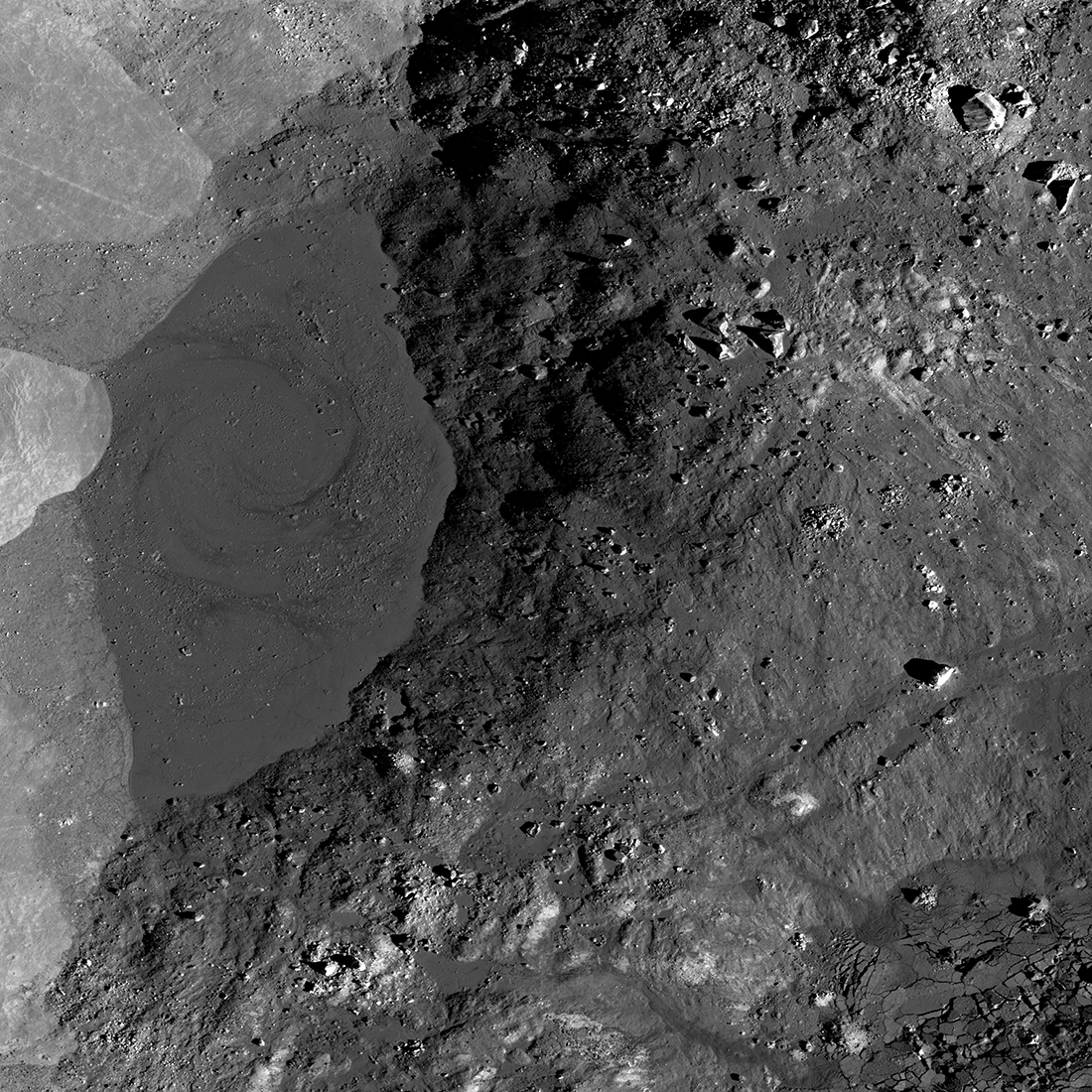
Amazing Giordano Bruno
Beautiful complex floor of Giordano Bruno crater. M1452055478LR, acquired 2023-10-16, incidence angle 65°, slew angle 0°, phase angle 64°, spacecraft altitude 96 kilometers, image width 3750 meters, pixel scale reduced...
Published on 20 Jan 2025
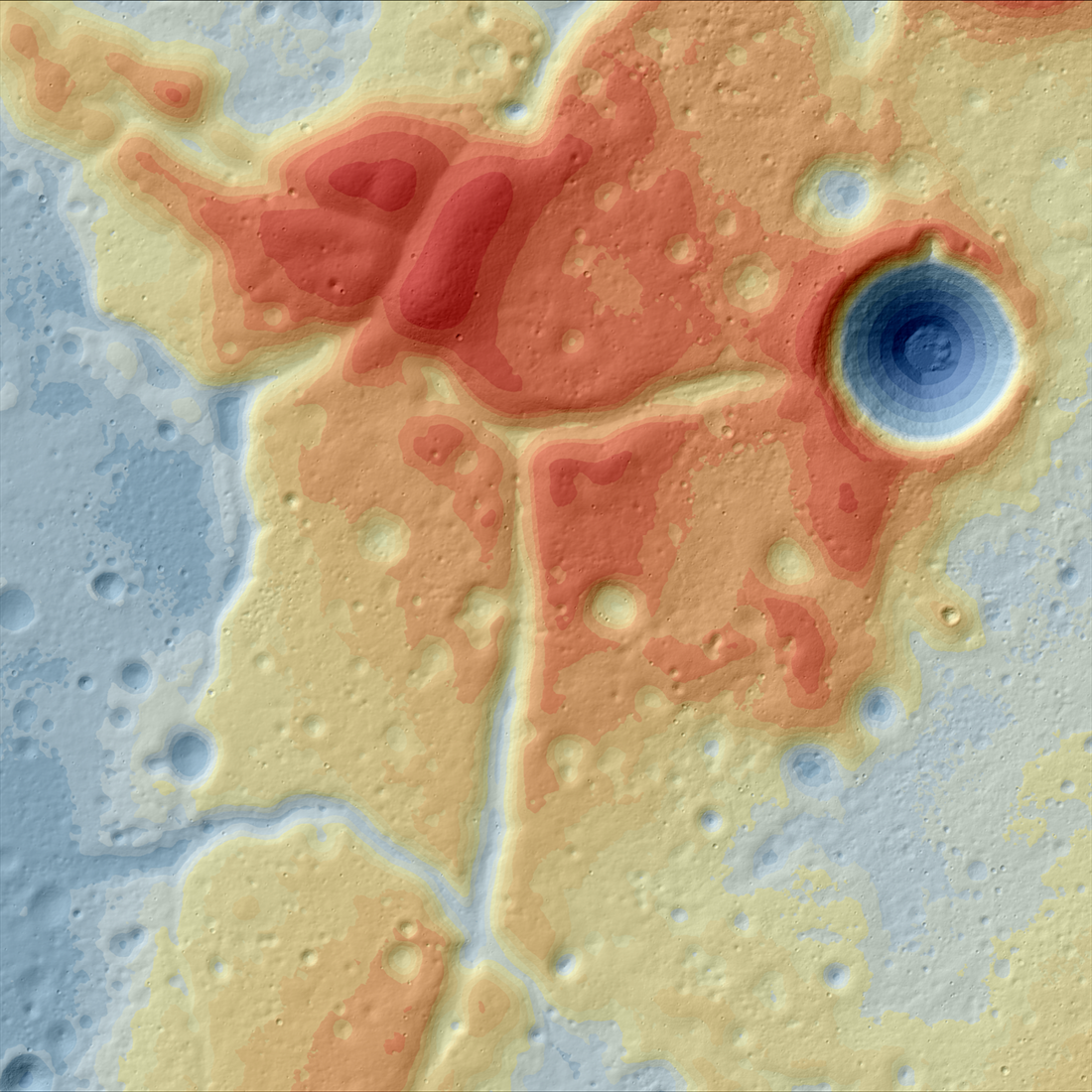
A Lunar Island Surrounded by Lava
Color-shaded relief map showing the elevations of the Western Crisium Kipuka (WCK) located on the western edge of Mare Crisium. The elevation ranges from -4,218 m (blue) to -3,195 m (red) [NASA/GSFC/Arizona State University].
Published on 01 Apr 2024
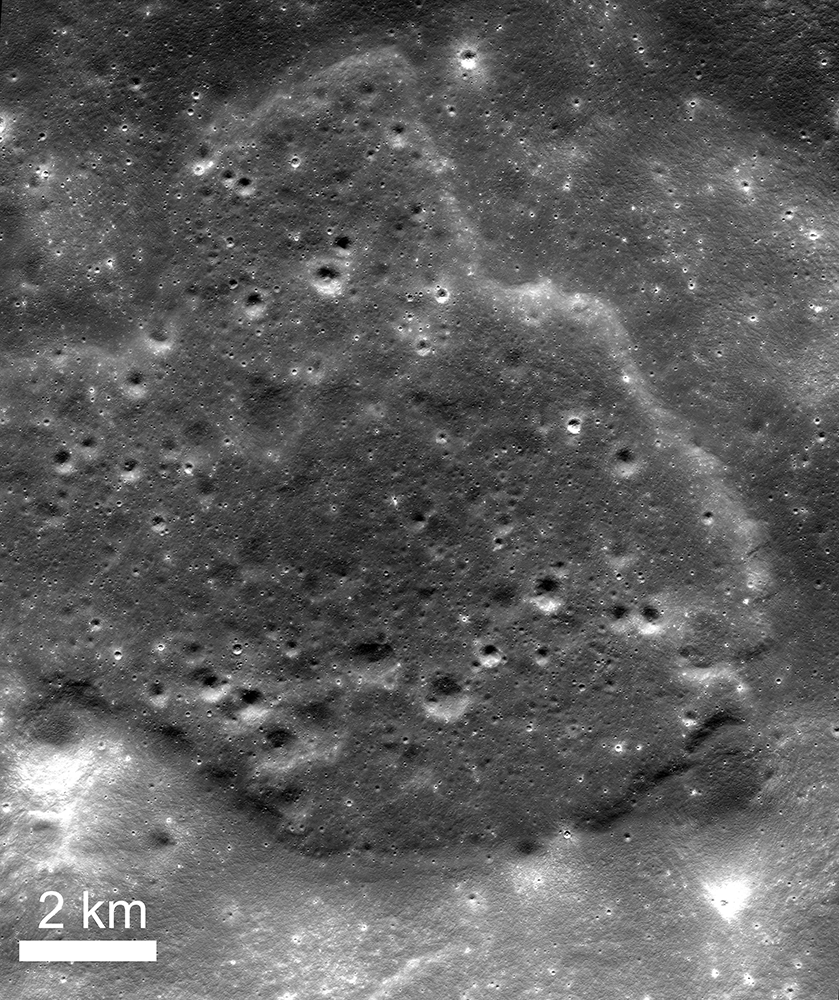
Ancient Impact Melt
Lobate margin of ancient impact melt flow within a nameless farside crater, 45.84° S, 227.32° E, NAC M1117380495LR [NASA/GSFC/Arizona State University].
Published on 28 Dec 2022
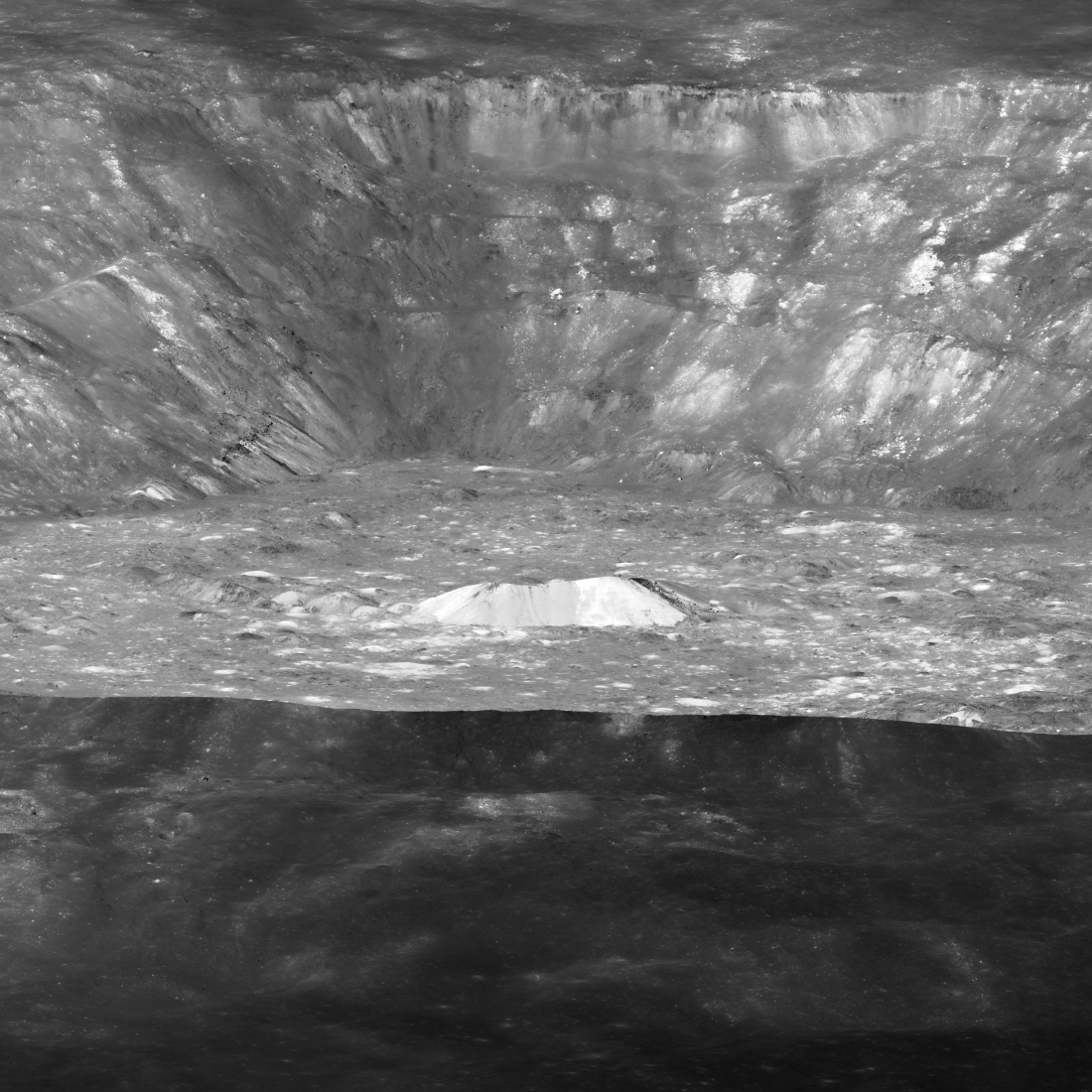
Dramatic Contrast
The dark rim of Aristarchus crater (23.7°N, 312.5°E) dramatically highlights its bright interior and central peak. There are more than 2700 meters of relief from the rim to the crater floor, and the central peak is 3,000 meters wide...
Published on 01 Dec 2022

Boulder Tracks: Race to the Bottom of Chaplygin Crater!
Boulders ejected from Chaplygin B crater rolled down the wall of the much larger Chaplygin crater (4.1ºS, 151.7ºE) leaving these spectacular tracks. Image 980 meters wide, north is up [NASA/GFSC/Arizona State University].
Published on 15 Jul 2021
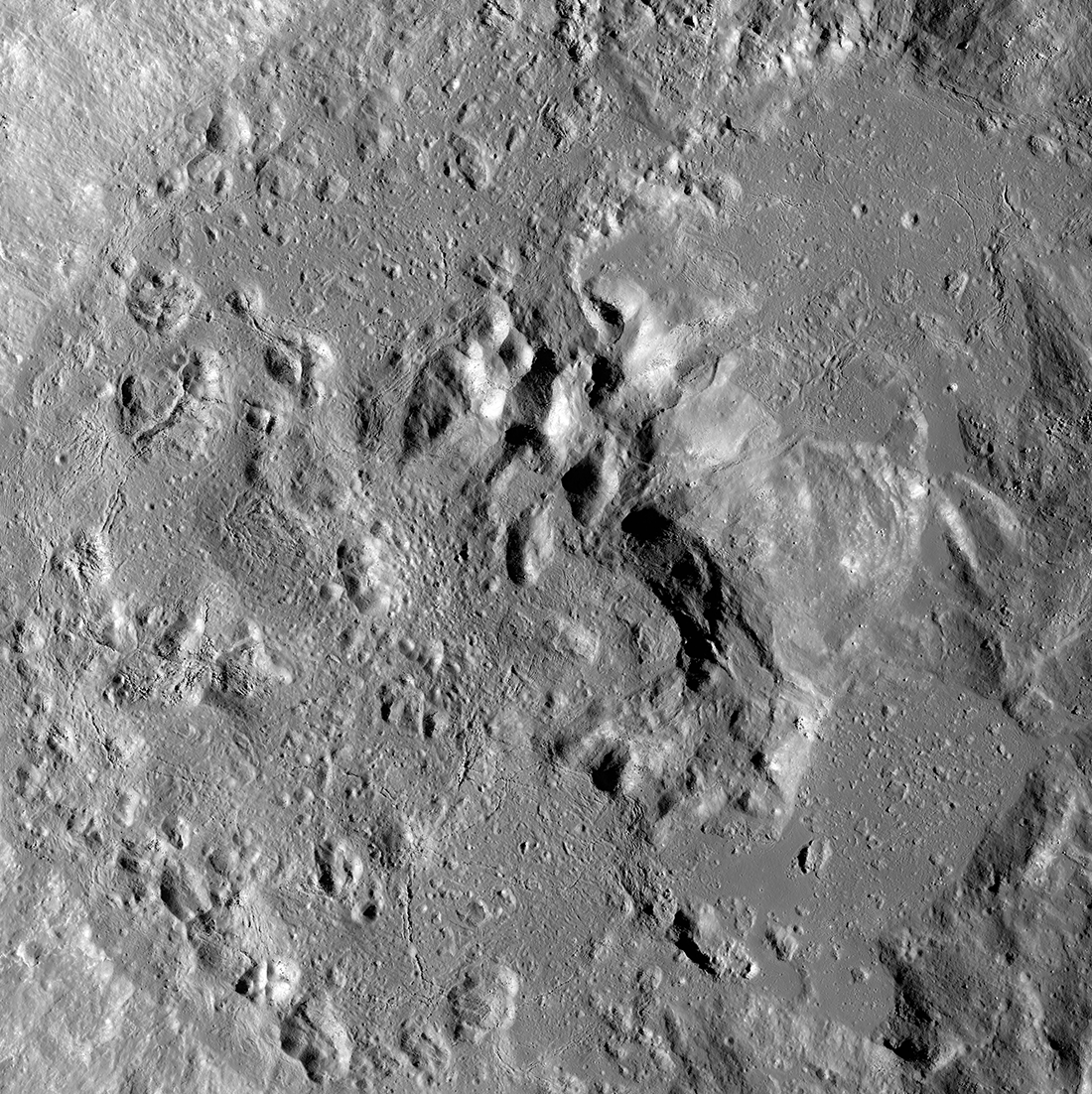
Farside Impact: Crookes Crater
During the formation of Crookes crater (48 km diameter, 10.39° S, 194.92° E), its central peak rebounded after the extreme compression from the high-speed impactor, and a small sea of impact melt eventually solidified on the crater...
Published on 27 Oct 2020
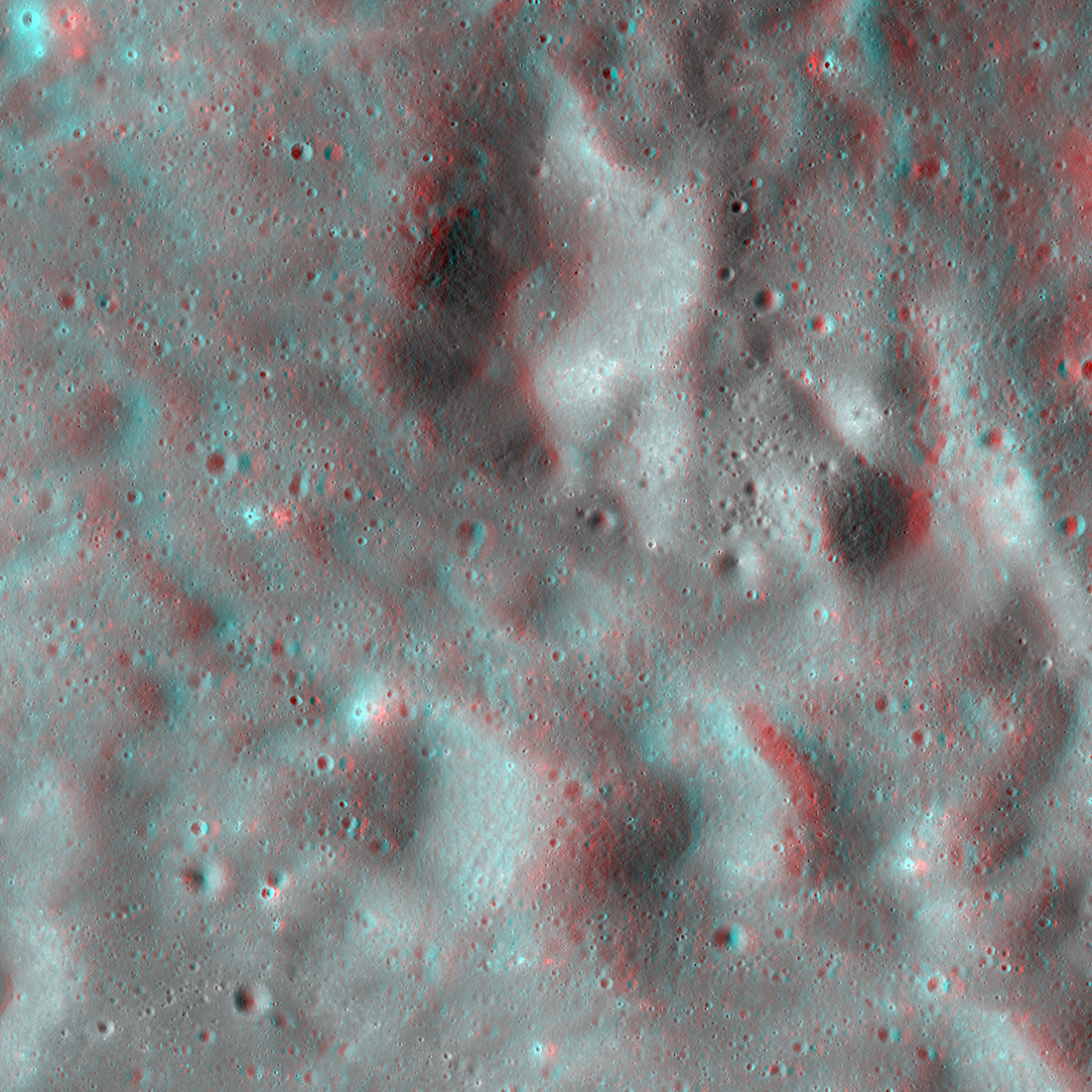
A Rain of Rock
A rain of rock carved these craters west of Vavilov crater. The ground here, which is elevated relative to the surrounding terrain, intersected with rock and other ejected debris excavated during the formation of Vavilov crater. The...
Published on 28 May 2020
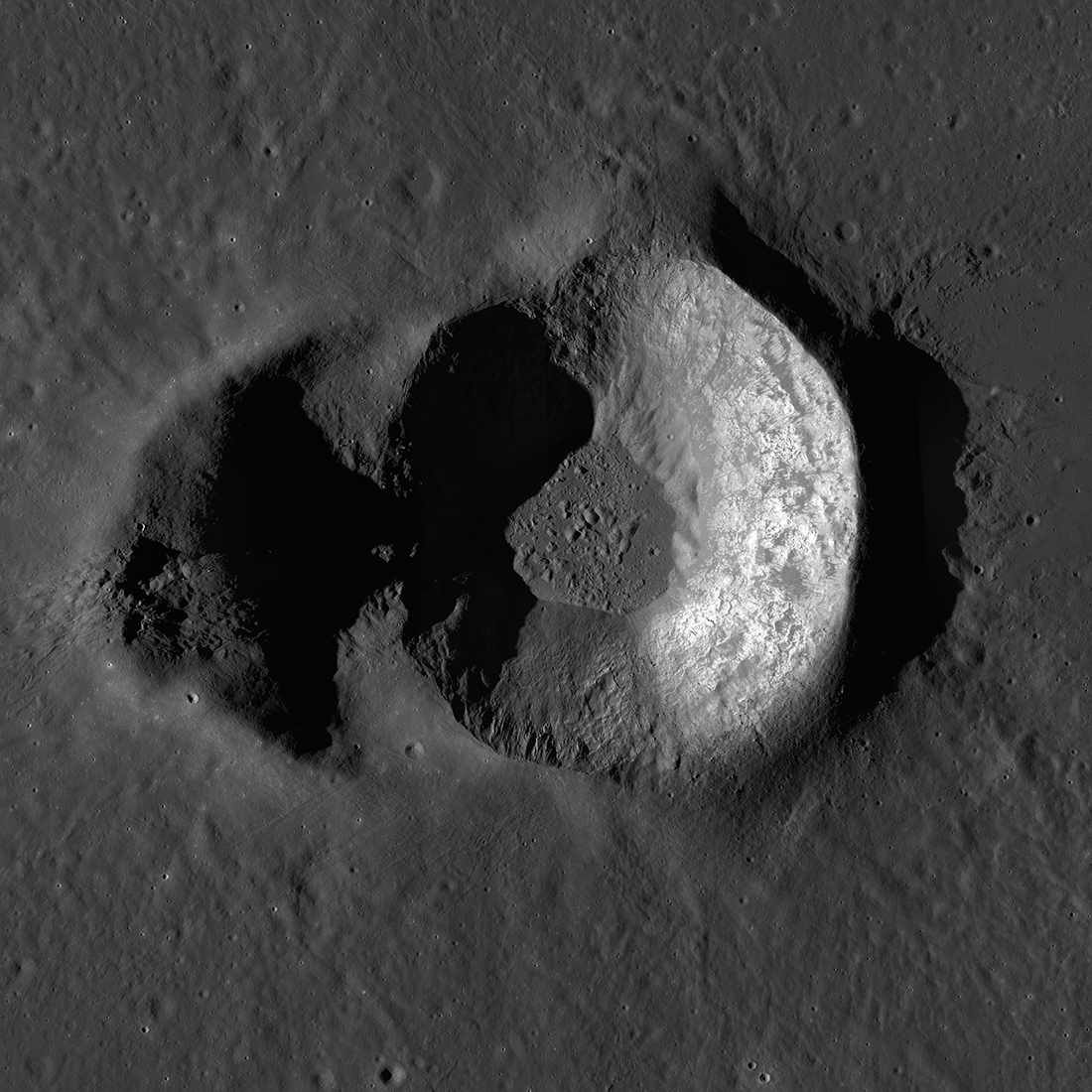
Double Trouble: Messier A
Messier A crater (2.039°S, 46.887°E, 10.6 km across from north to south) feature mosaic, created from NAC images M1188059614LR, M1188045553LR, and M1188052583LR [NASA/GSFC/Arizona State University].
Published on 01 Apr 2020
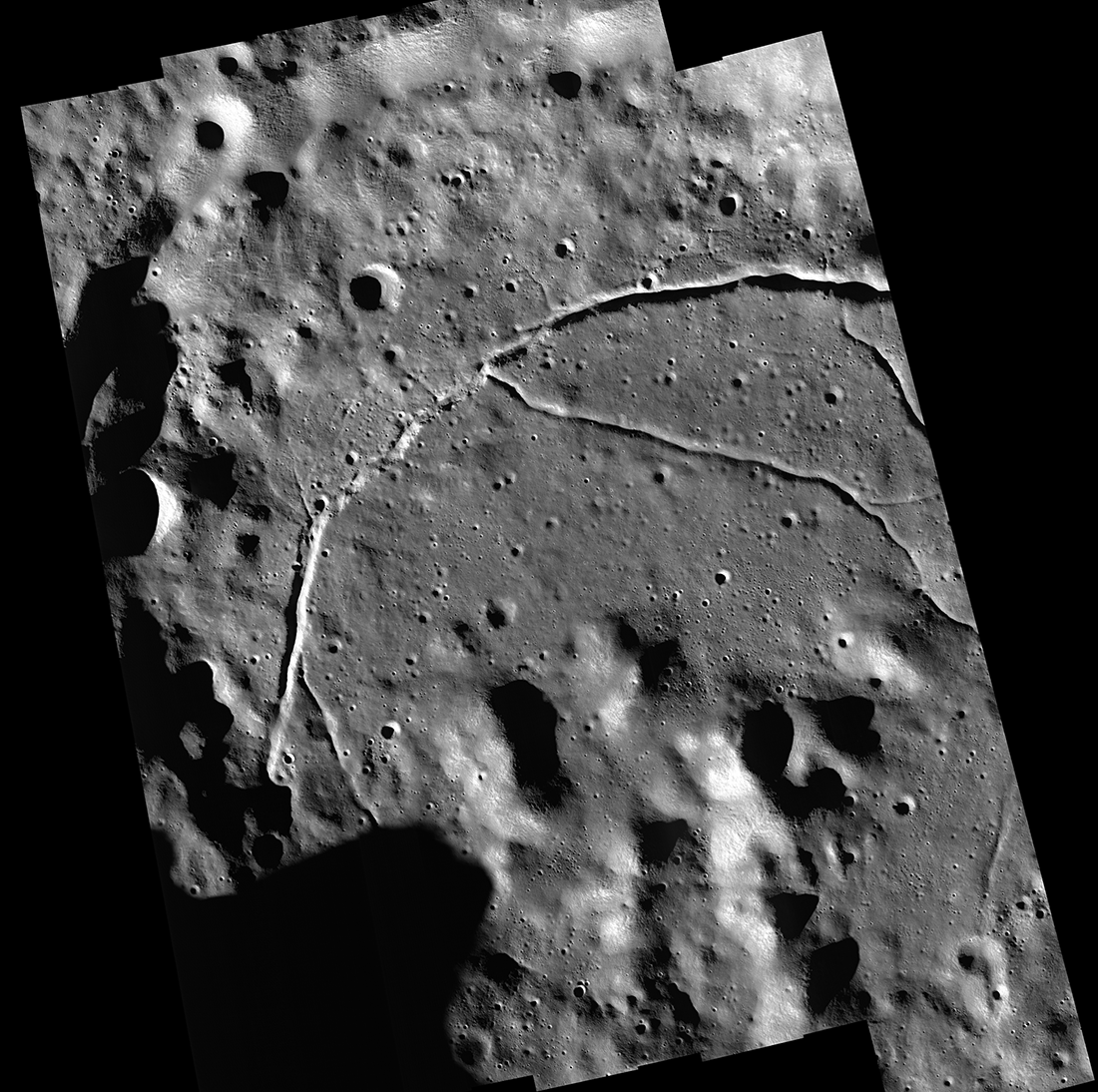
Feature Mosaics: Behind the Seams
A seamless mosaic of a portion of Karpinsky crater (91 km diameter, 72.61° N, 166.80°E) seamless mosaic. Scene is 55 km across, NAC images M1309496597L/R, M1309503618L/R, M1309510644L/R, M1309517669L/R, and M1309524696L/R...
Published on 16 Mar 2020
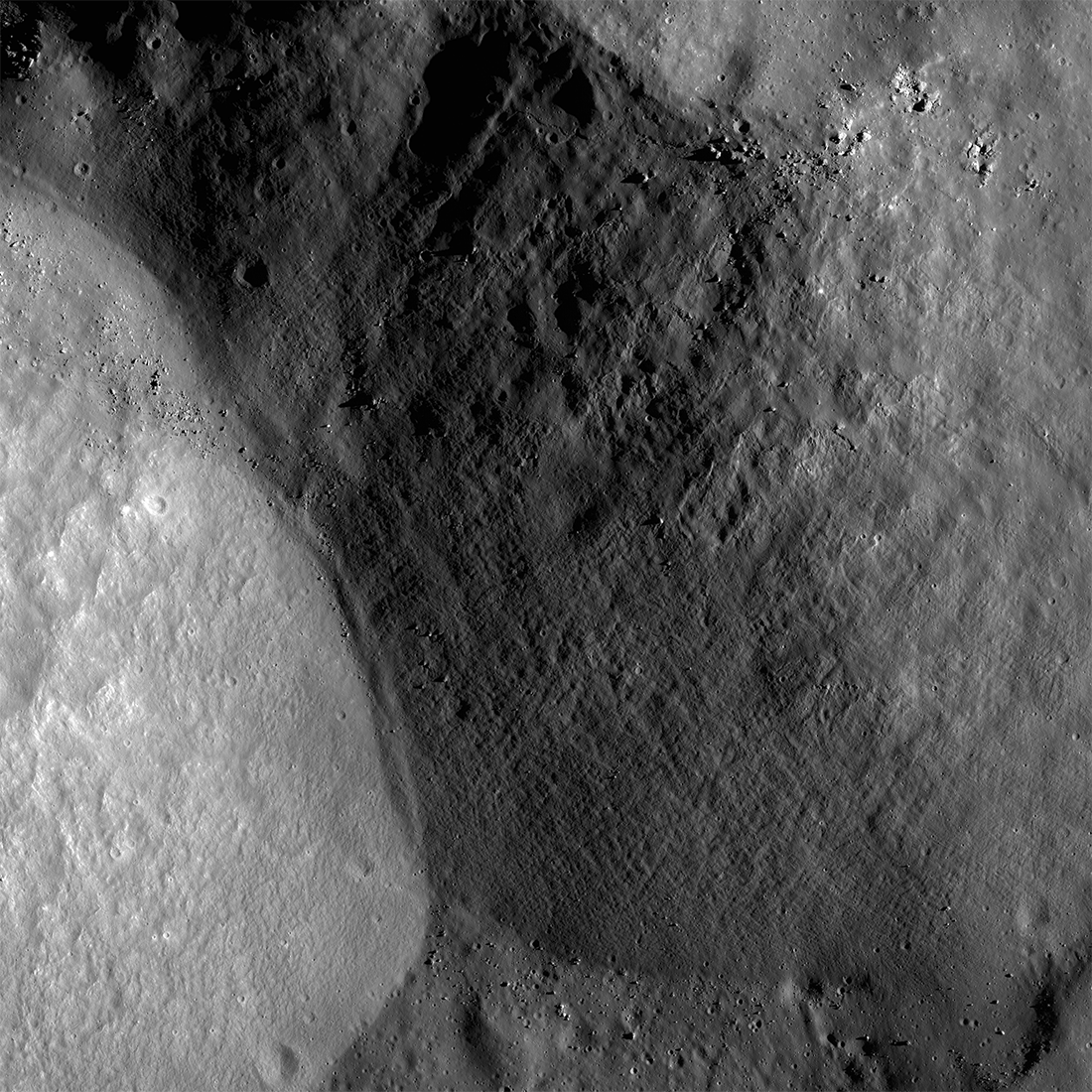
Plumbing the Depths by Scaling the Heights
The central mountainous peaks of Maunder crater are thought to be made of rock that was melted by the impact event that resulted in the Orientale basin. This impact melt rock deposit was then lifted up from below the surface during the...
Published on 19 Feb 2020
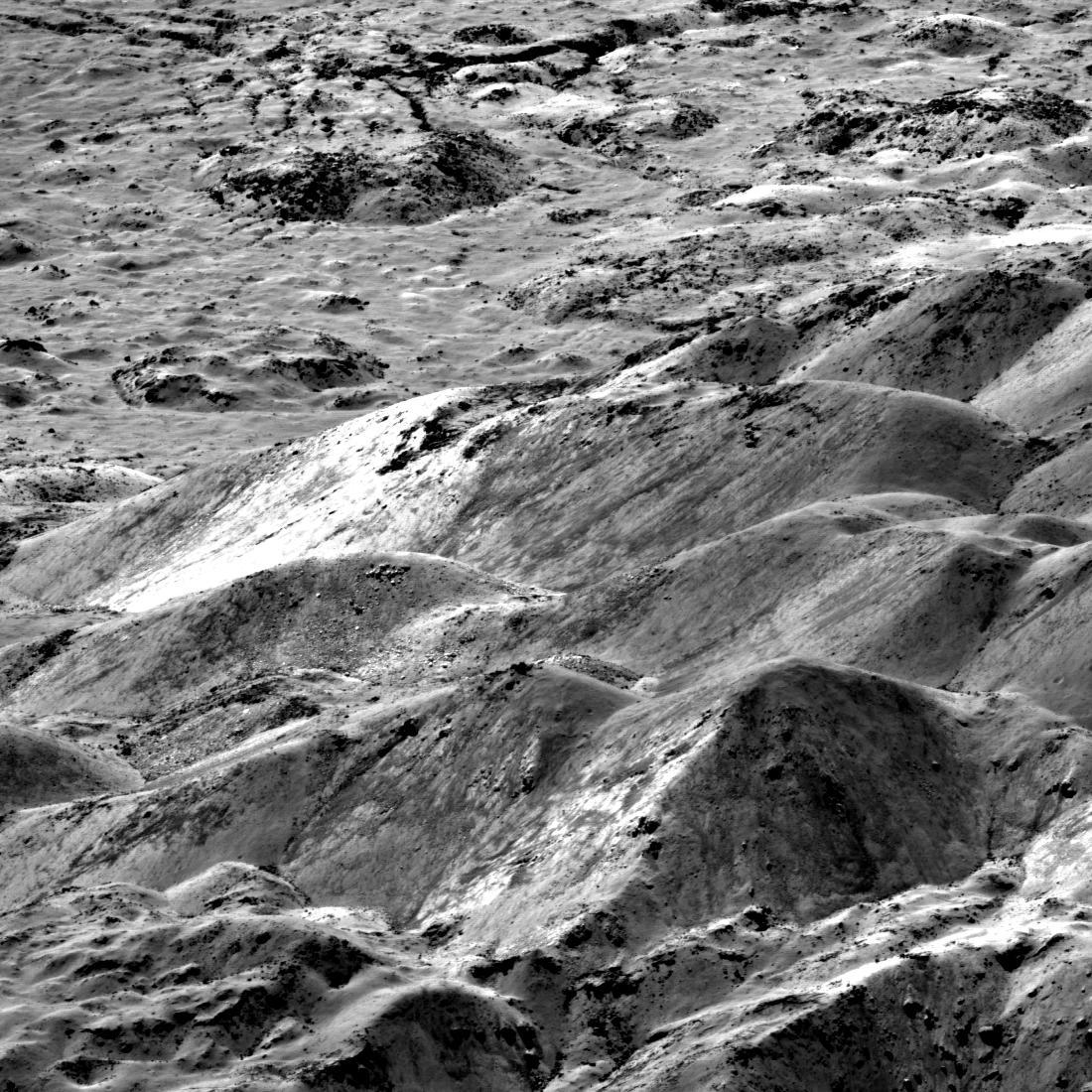
What Lies Beneath
Spectacular contrasts of gray scale in the central peak of Jackson crater signal variations in both composition and maturity (degree of freshness of the surface). Image is 3100 meters wide, north is to the right, M1265842750LR...
Published on 19 Jul 2019
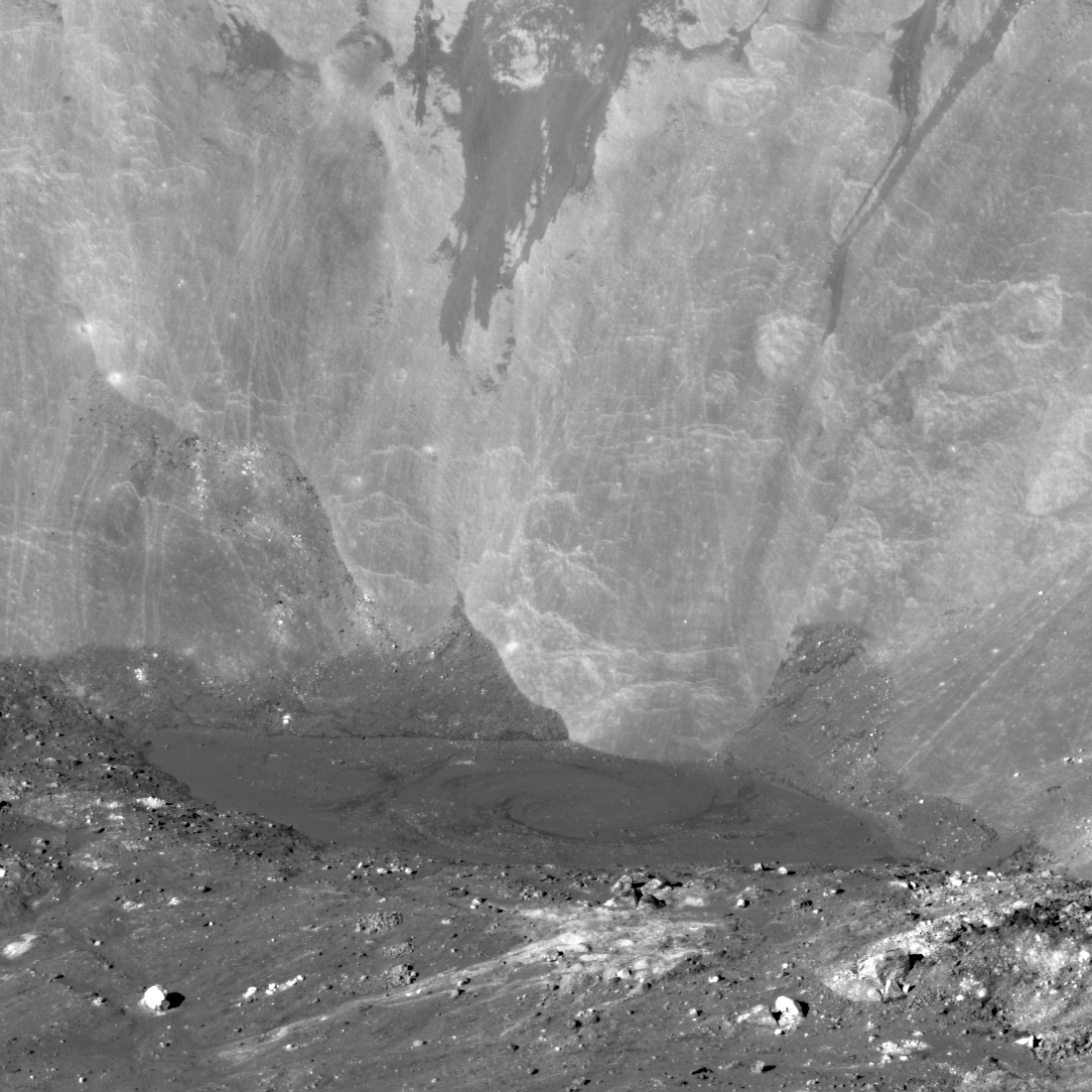
How Spectacular is this View?!?!
Oblique view of what might be the most spectacular young crater on the Moon - Giordano Bruno. The imposing cliff in the background rises 3000 m above the melt pool seen in the middle ground (top of cliff not seen here). Scene is about 3...
Published on 15 Jul 2019
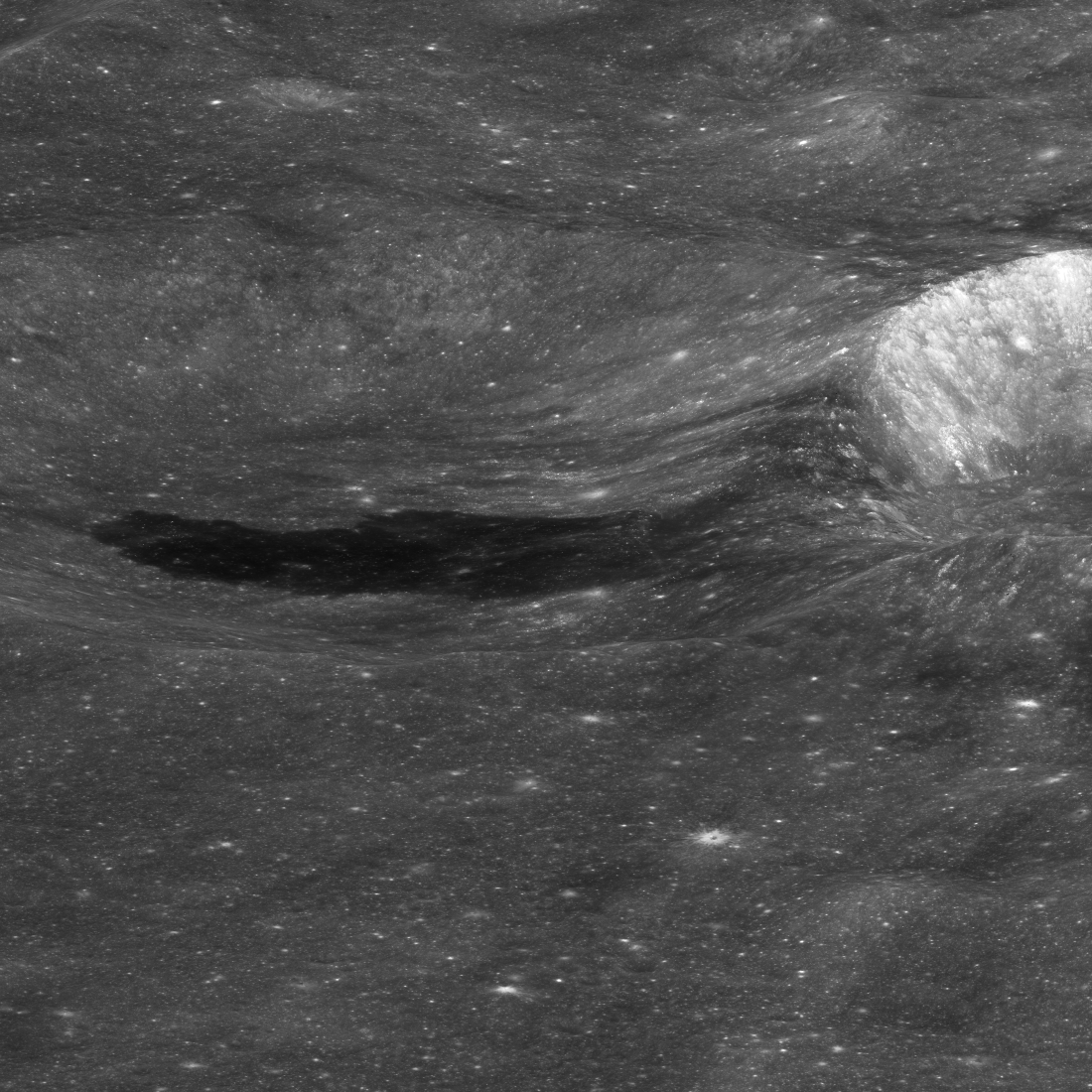
Korolev X and Z
Sharing a melt flow: visible in the right part of this oblique image is the bright wall of Korolev Z crater, the source of a 12.5-kilometer-long dark melt flow that drapes across the ancient floor of the degraded crater Korolev X. South...
Published on 14 Dec 2018

Lunar Beauty
The Lunar Reconnaissance Orbiter Camera imaged this bright young ray crater (3.13˚N, 281.07˚E) on 3 November 2018 — just three weeks ago. The Sun shone from the west (left, 48˚ incidence angle). This image covers an area 8.1 kilometers...
Published on 21 Nov 2018
Fractured Crater
Interior of Komarov crater (24.59°N, 152.25°E; 85 kilometers diameter), near the southern edge of Mare Moscoviense, on the lunar farside. Image 15 km wide across center, LROC NAC M1263901757LR [NASA/GSFC/Arizona State University].
Published on 15 Nov 2018
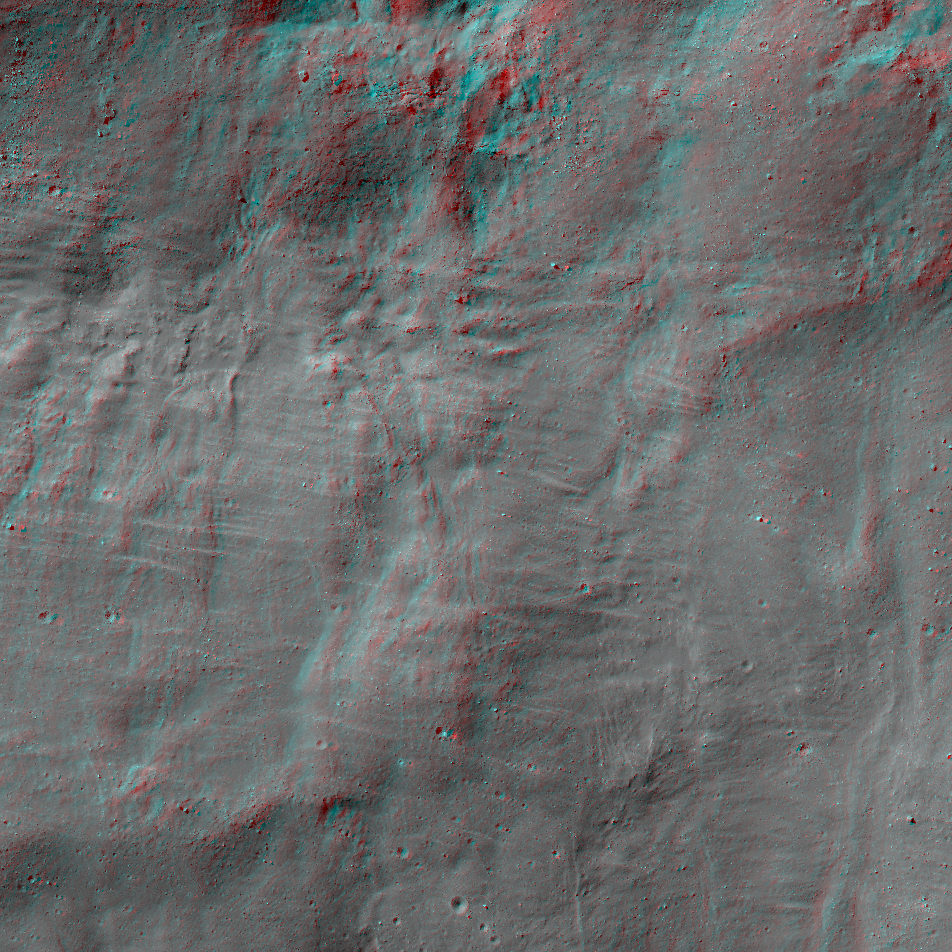
The South Side of Tycho Crater
Get out your red/blue anaglyph glasses for a three-dimensional treat! This extreme closeup of the south side of 86-kilometer-diameter Tycho Crater shows melt flows and pools, small craters, sagging slopes that look like ripples,...
Published on 08 Oct 2018
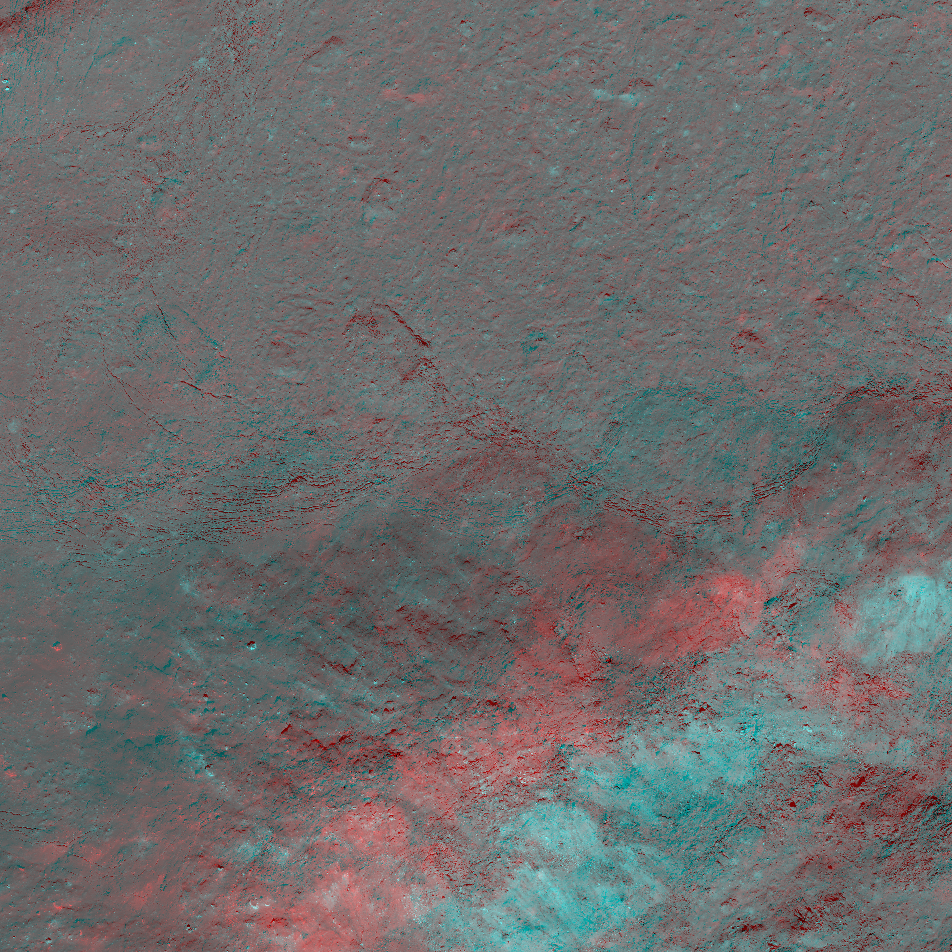
NAC Anaglyph: Moore F Crater
Moore F is an impact crater in transition. Image width is about eight kilometers. NAC images M125720601L/R and M125713813L/R. [NASA/GSFC/Arizona State University]
Published on 09 Aug 2018
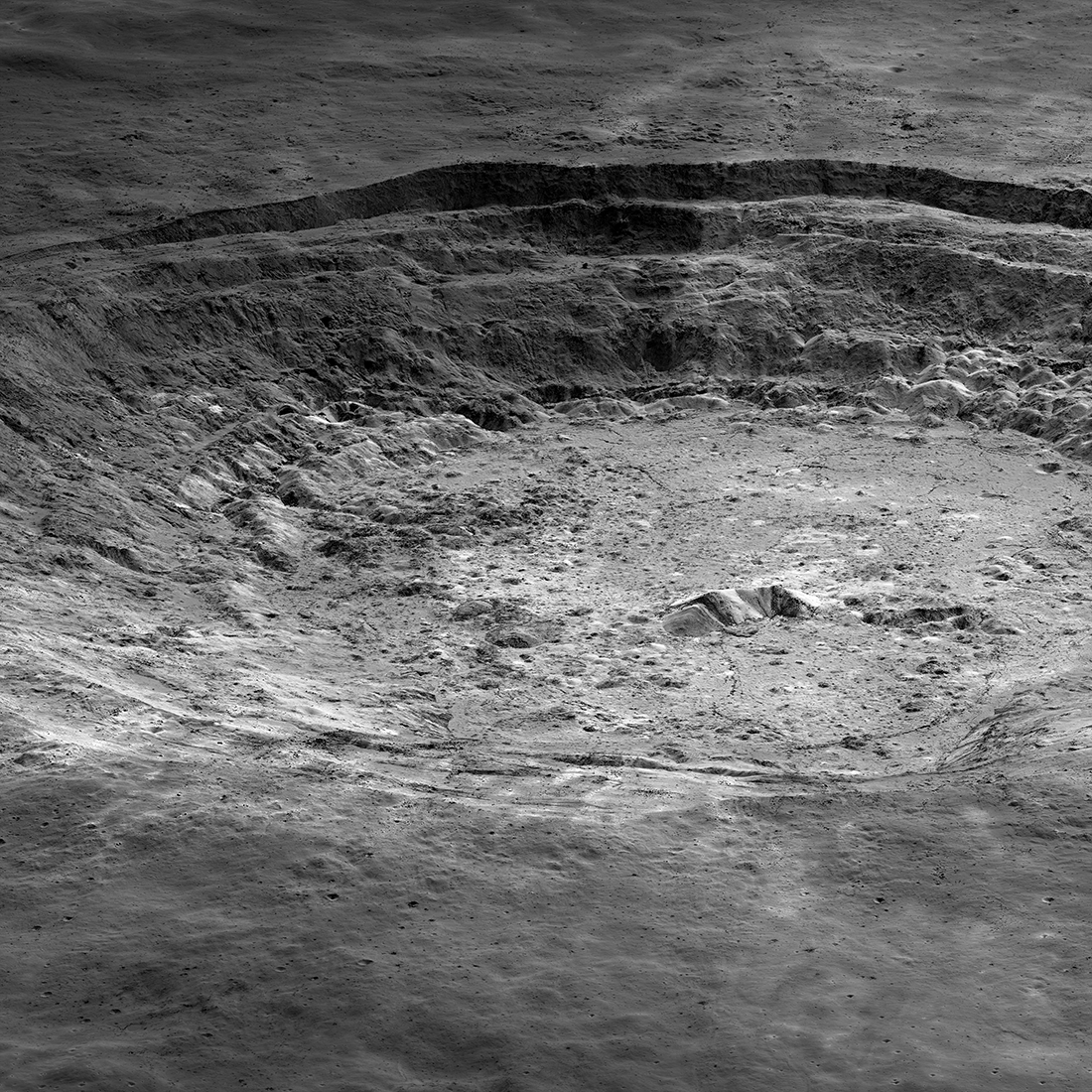
Aristarchus Crater
The Aristarchus crater (40 kilometer diameter, 23.73°N, 312.51°E) and plateau is one of the most geologically complex areas on the Moon. In this amazing picture, the LRO spacecraft slewed 62° (west-to-east) looking across the crater....
Published on 04 Aug 2018
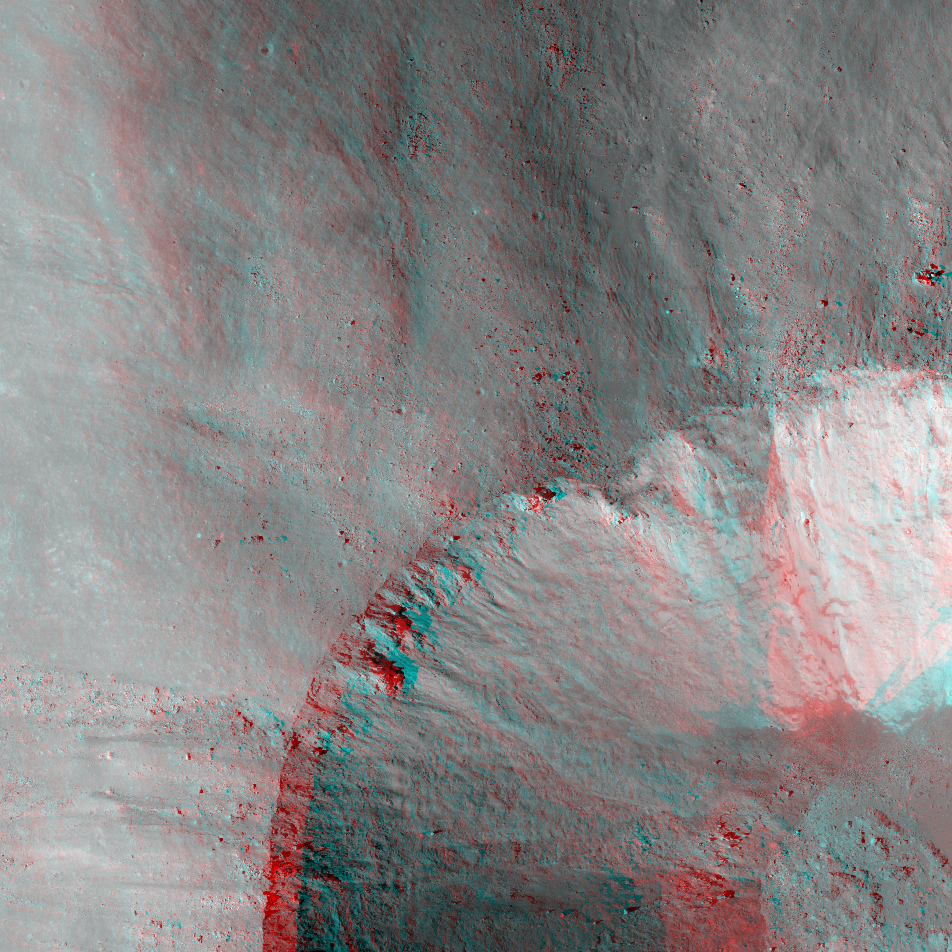
NAC Anaglyph: Eimmart A Crater
Eimmart A, partially visible at lower right, has a split personality. Image numbers M1098422839L/R, M1098408548L/R [NASA/GSFC/Arizona State University].
Published on 21 Jul 2018